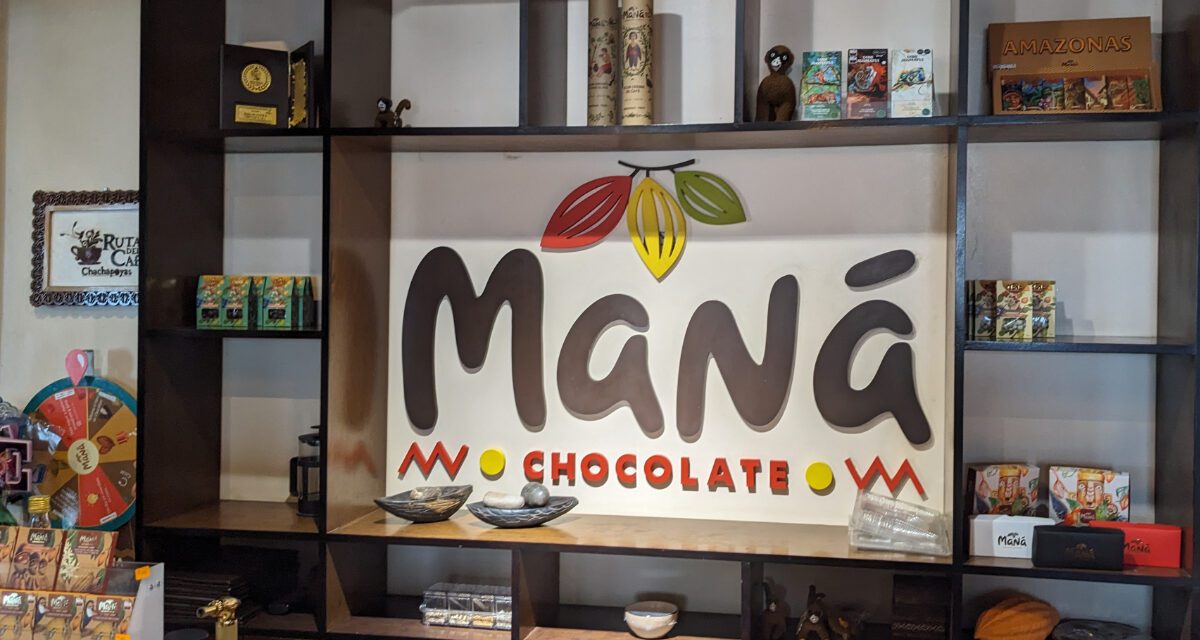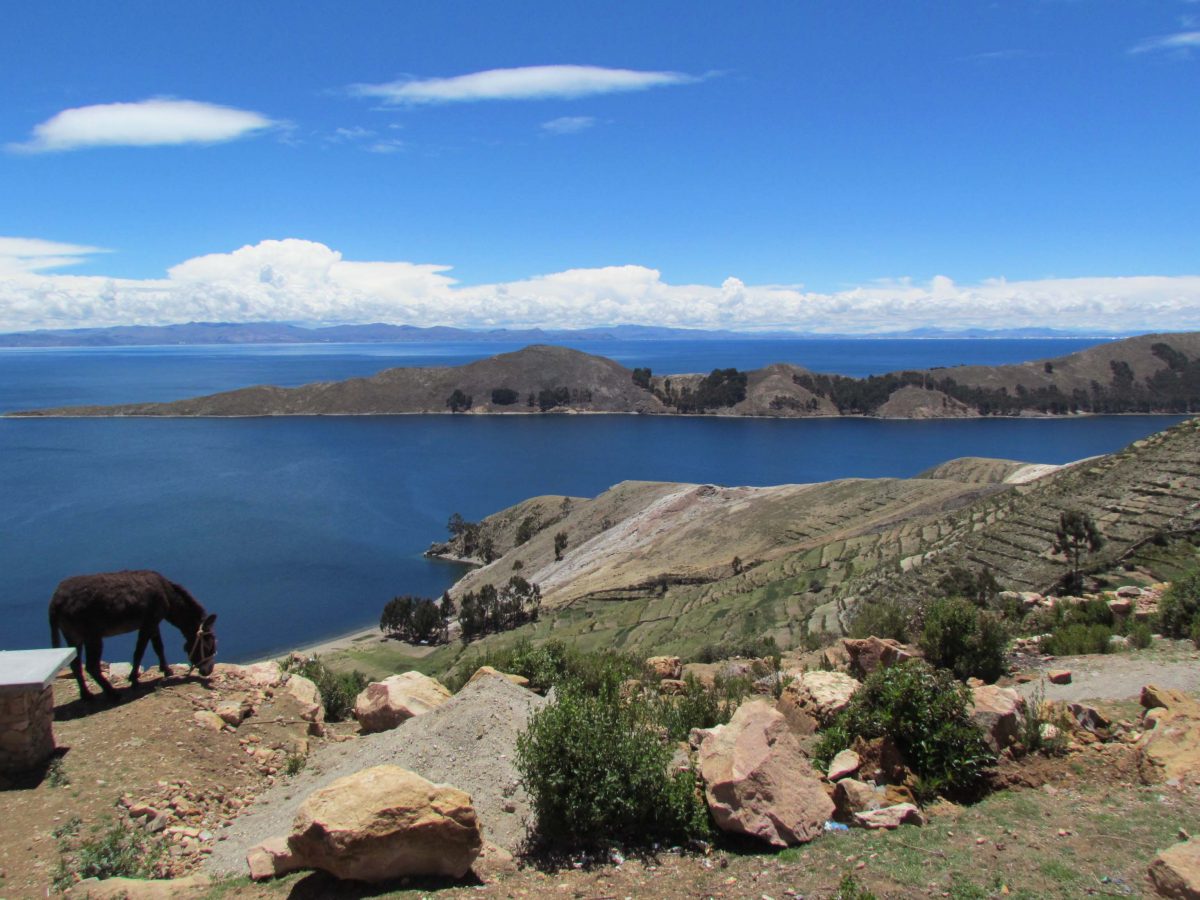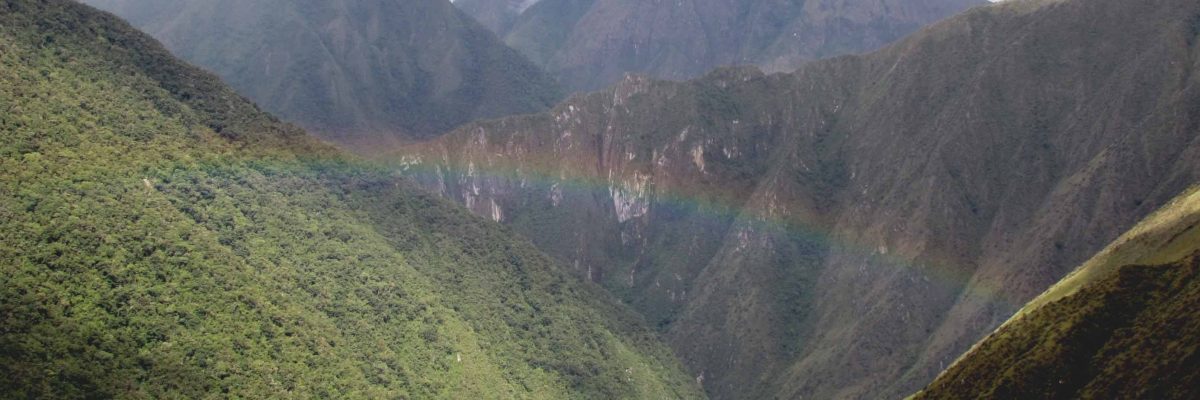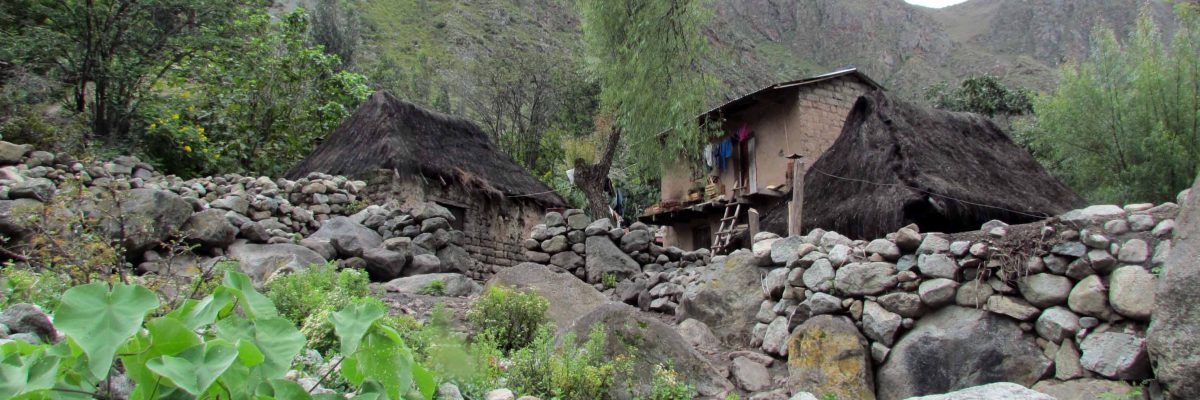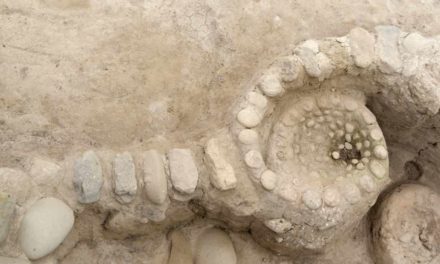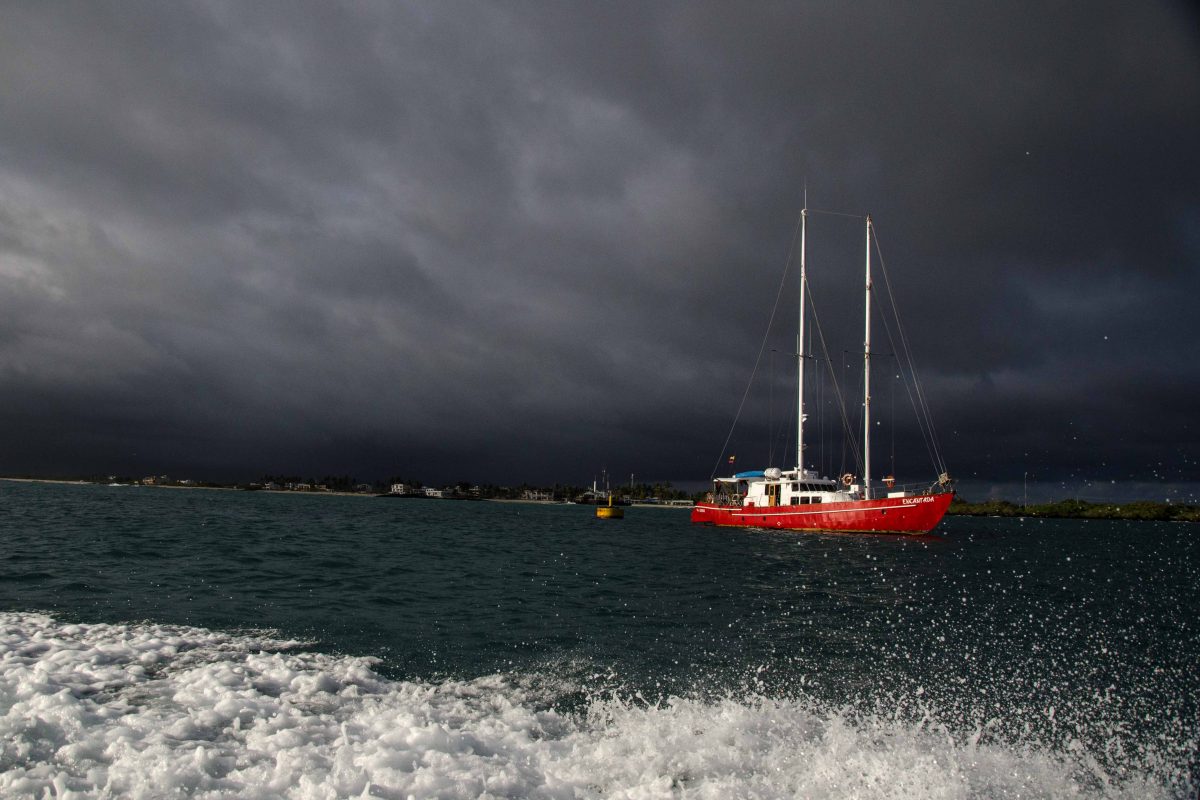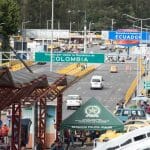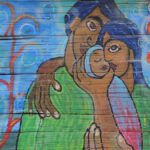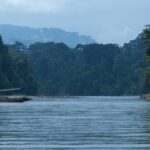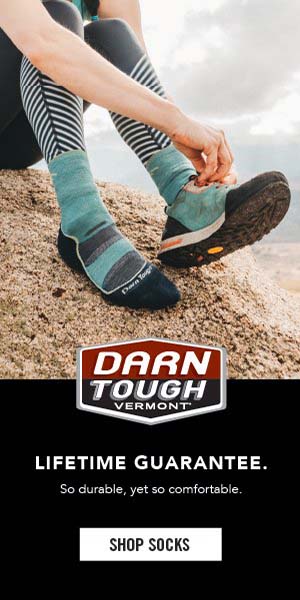We visited Maná Coffee and Chocolate, a small café and artisan chocolatier in the heart of Chachapoyas, Peru, for a hands-on chocolate experience we won’t soon forget.
Lately, we’ve been on a bit of a chocolate kick. So when asked to choose between coffee and chocolate for a late afternoon tour, we went with sugar over caffeine. Are we glad we did! What was supposed to be a short visit turned into a delightful three-hour session (we couldn’t stop asking questions!), and we loved every minute of it.
We are grateful to our friend and local guide, Marilyn Velasquez, who met us at the cafe with her family, helping arrange what turned out to be a deeply flavorful—and unexpectedly educational—evening.
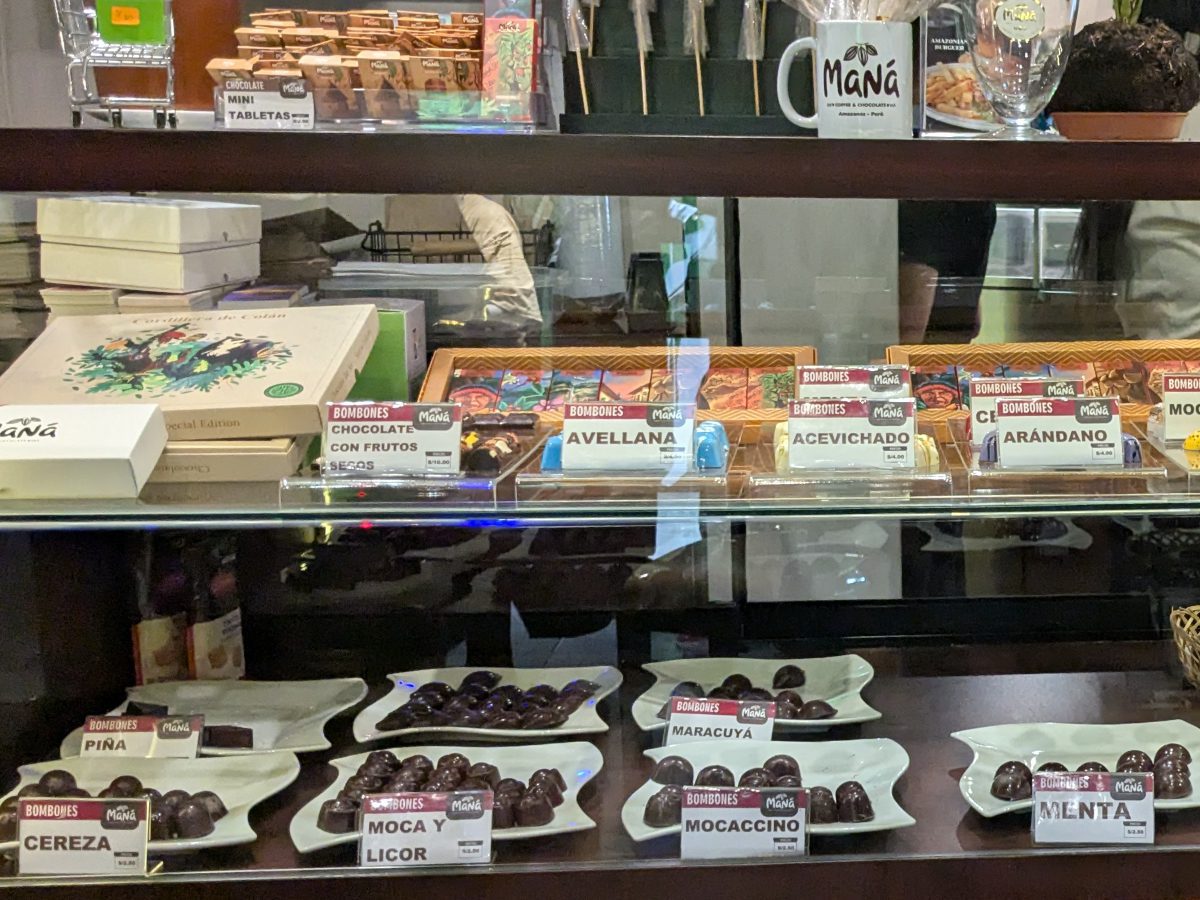
Meeting Giannina, Owner of Maná Chocolate
With her hair pulled back into a practical ponytail and wearing a Maná Coffee and Chocolate apron, Giannina Trigoso was clearly ready for business. From the moment we stepped into her workshop, she guided us through the world of cacao with infectious enthusiasm and deep expertise.
Giannina’s chocolate journey began over 15 years ago, back in high school, when she created chocotejas filled with walnuts using cacao from her native Amazonas. That project earned second place in a school competition—and it was the spark that eventually ignited Maná Coffee and Chocolate, now a thriving café and bean-to-bar brand in Chachapoyas. Today, she works exclusively with Cacao Amazonas Perú, a product with protected designation of origin, and her mission is clear: to support local cacao producers and indigenous communities through every chocolate bar she makes.
In fact, her recent limited-edition line—Uchi Augmatui—features chocolate bars wrapped in artwork inspired by stories written by Awajún children from Urakusa, in the Condorcanqui province. A portion of each sale goes toward building a library for the community. It’s no surprise that the Ministry of Commerce and Tourism featured her work in a national spotlight—watch the video here:
Giannina knows her stuff—but rather than spill all her secrets here, we encourage you to experience it for yourself on your next trip to Chachapoyas. We’re only sharing a few highlights!
Maná Uses The Best Peruvian Chocolate
Before we ever touched a cacao bean, Giannina walked us through the journey of chocolate—from the mazorca (the cacao pod) to the final bar. She explained how cacao is grown in the nearby valleys along the Río Marañón, at elevations ranging from 3,000 to 3,600 feet (900 to 1,100 meters), where the unique combination of climate and terrain creates ideal conditions for high-quality cacao.
We learned about different types of cacao, like the delicate and aromatic Cacao Criollo, prized for its flavor but difficult to grow, and the more common Cacao 661, which is hardier but less nuanced. Though we didn’t have a fresh pod to open, Giannina had a sample on hand to show how each cacao bean is encased in a white, fruity pulp—a sweet, surprising reminder that chocolate begins as fruit, not candy. This overview set the stage beautifully for the hands-on activities that followed.
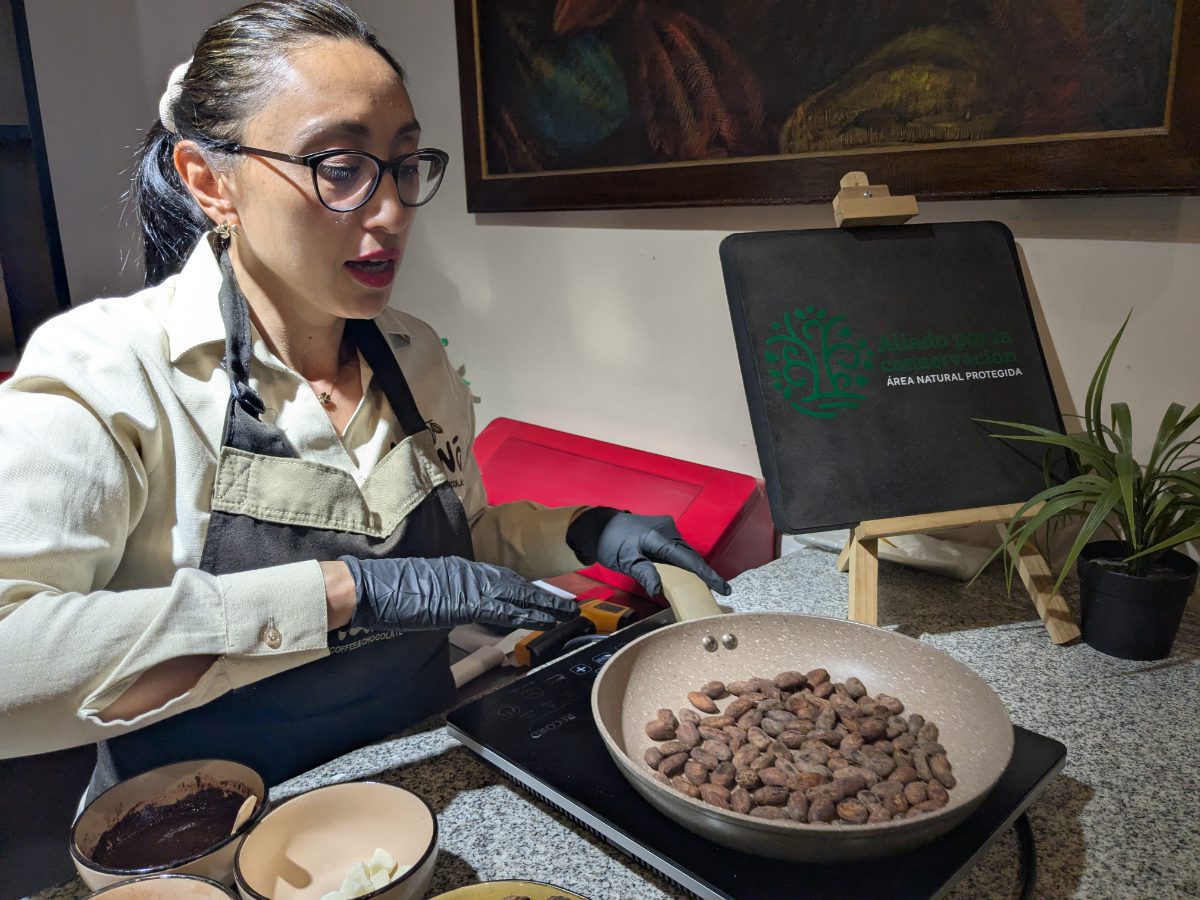
Fermentation Makes or Breaks Great Chocolate
If you take away one key lesson from her chocolate experience, it’s this: fermentation matters. It’s the make-or-break moment in producing high-quality chocolate. And it takes place at the farm, not in the shop. It’s part of the reason that sourcing quality cacao beans is so important.
Properly fermented cacao beans break apart easily into cacao nibs that look like tiny segments of a brain. A solid bean? That’s a failed fermentation. And with the proper fermentation, Giannina can create award-winning chocolate right in her own shop.
Chocolate Step-by-step
Then it was our turn. We donned our aprons as Giannina invited us into the process. Suddenly, we weren’t just tasting chocolate—we were making it, step by step. Her passion came through as she taught us to properly toast cacao beans, peel off their thin papery skins (saving them to make tea), and mash the beans into a thick paste (chocolate liquor). We tasted the rich, nutty flavor of a perfectly toasted cacao bean and breathed in the wonderful aroma of freshly ground chocolate. Even without the addition of sugar, I was in heaven!
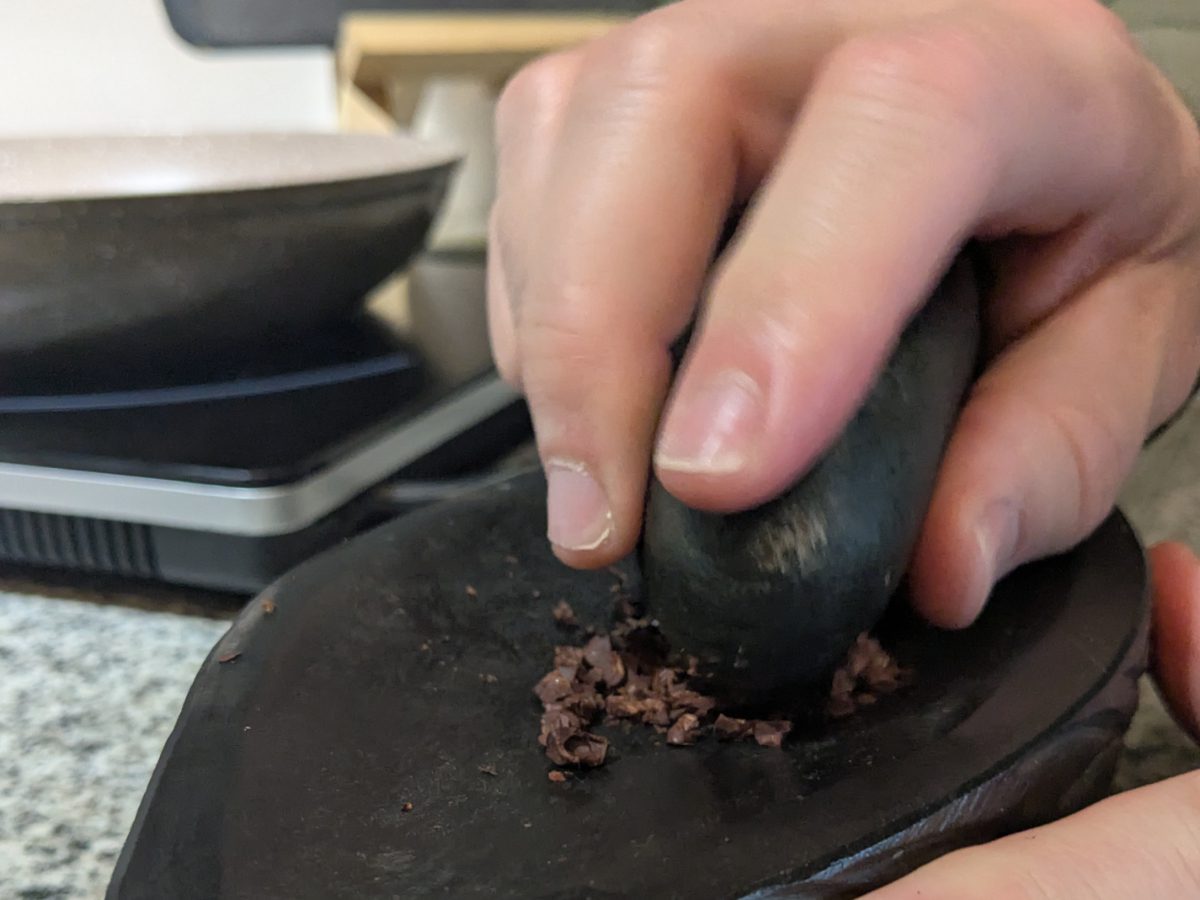
Tempering Chocolate
The more we practiced, the more we learned. At one point, I was even nominated to temper the chocolate we’d be using for our bars! Giannina handed me a large bowl of melted chocolate, which I poured onto the cool marble countertop and began spreading back and forth, slowly, methodically, until the mass reached just the right temperature. It was both nerve-wracking and mesmerizing. Without an audience watching, I can imagine how tempering chocolate could become a meditation, demanding your full attention, grounding you completely in the moment, with nothing else in the world but the chocolate in front of you.
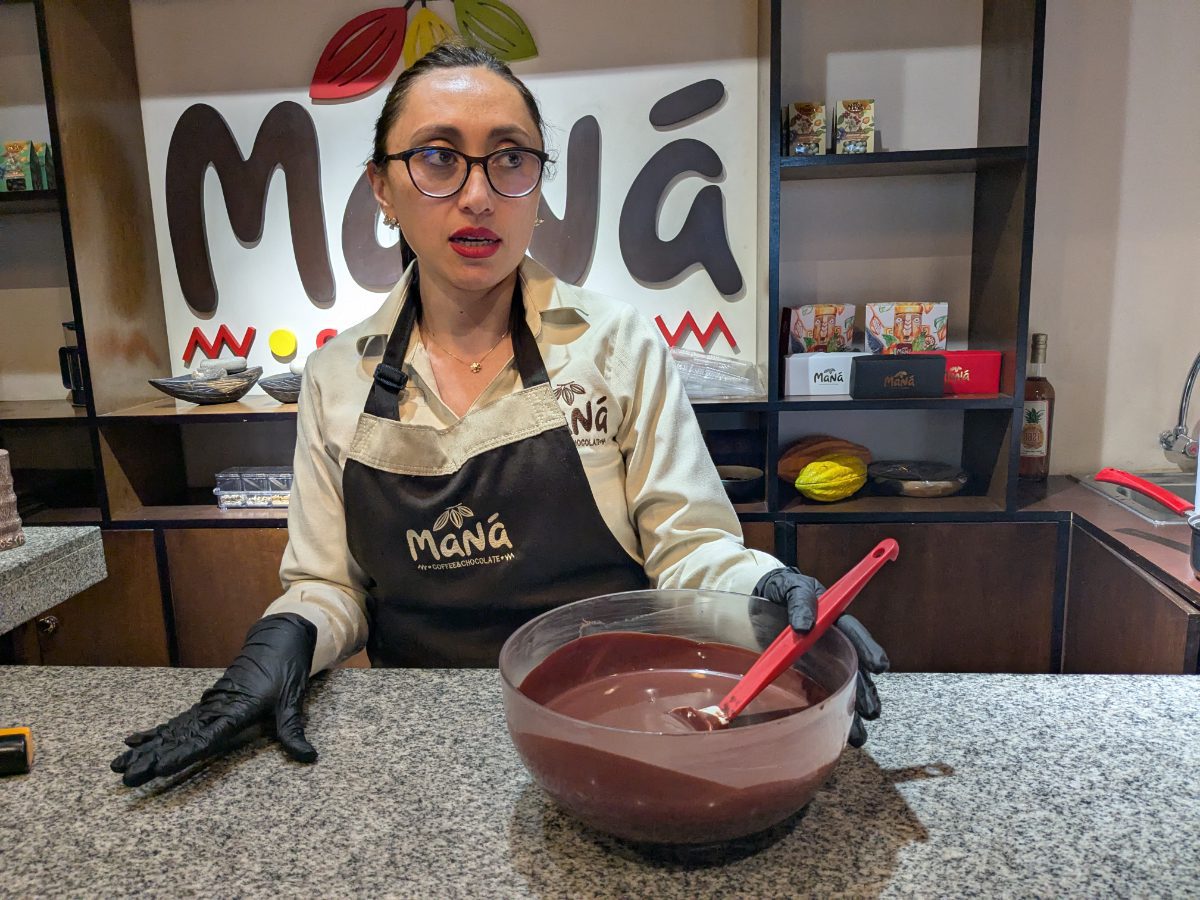
Making Chocolate Bars
After almost perfectly tempering the chocolate, I scooped the cooled mass back into the bowl so that we could each dip back in and fill our chocolate molds. Scott and I chose chose the Chachapoyas sarcophagi for our chocolate bars, a figure of great significance to the region. We had yet to visit Kuelap or Karajía, but had already noticed that these figures were everywhere, obviously deeply imbedded in the local culture.
While we waited for our chocolate bars to cool, Giannina showed us how to use their artisan-made chocolate in other delicious ways. My favorite? Spanish-style hot chocolate (check out her reel on Facebook). She used a bar crafted specifically for this purpose—designed to melt smoothly into milk (her favorite is almond) with a touch of cornstarch. The mixture is whisked until it becomes a frothy, thick blend: slightly bitter, unmistakably chocolatey, and luxuriously textured—like a pourable custard you might drizzle over dessert. But instead of topping a treat, we drank it straight from the cup, licking our lips and tipping it back to savor every last drop.
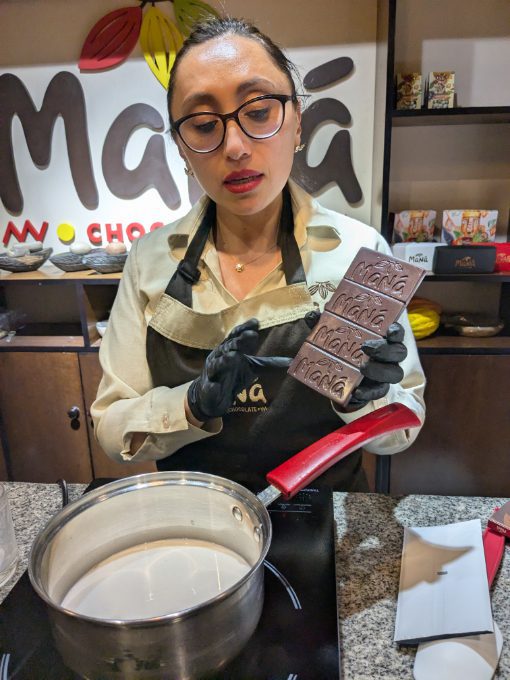
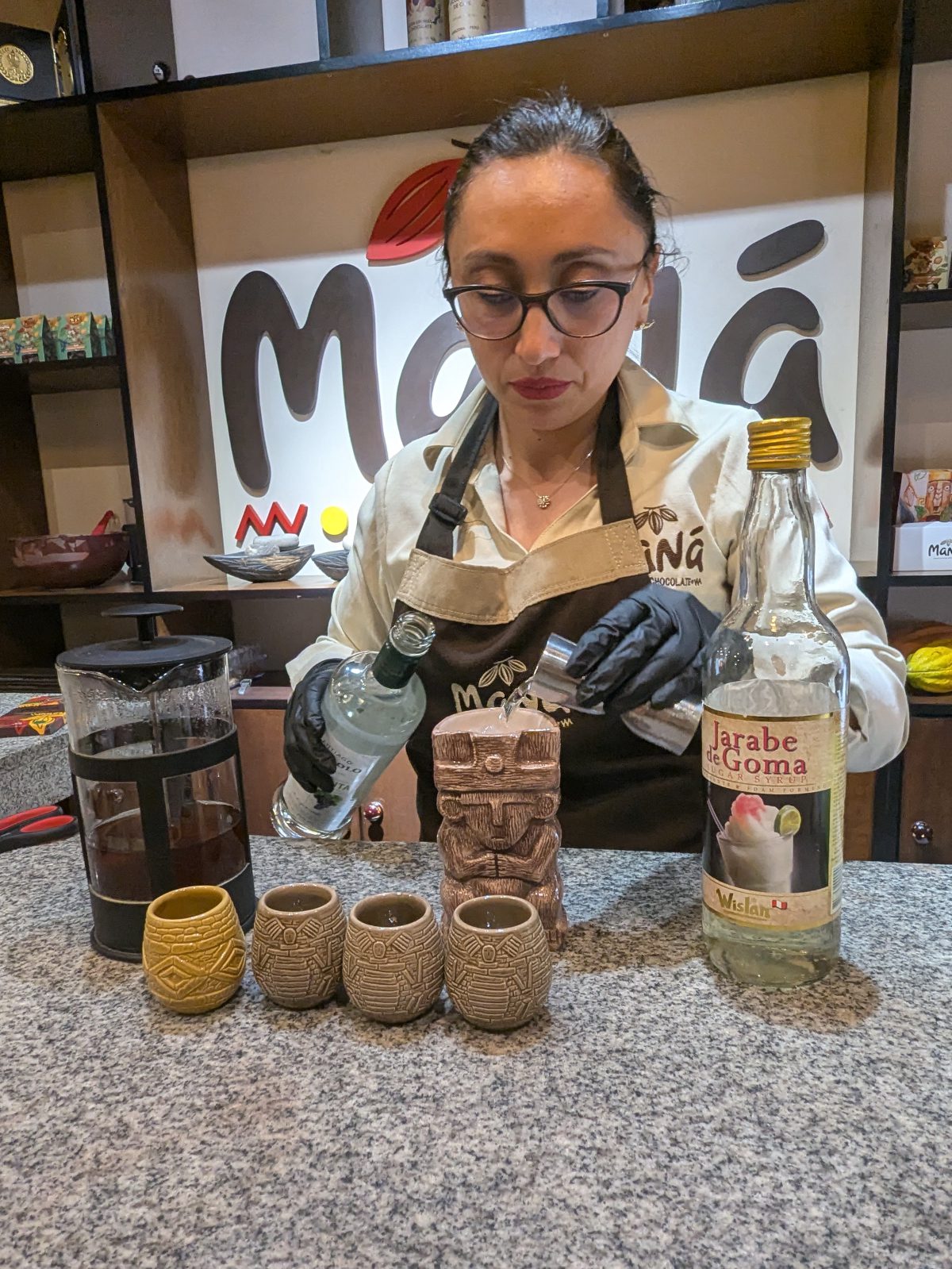
After the hot chocolate, I thought there couldn’t possibly be more—but Giannina wasn’t done surprising us. She offered us a taste of tea made from the cacao husks, strongly steeped and then brightened with a splash of pisco—a kind of chocolate chilcano, rich and earthy with a playful twist. But the real finale came in the form of her handmade chocolate candies.
Our favorite? What Marilyn’s son hailed as the acevichado—a white chocolate candy brightened with citrus and spice, like a ceviche without fish. Its smooth white shell was splashed with dashes of bright green, red and yellow. It was all at once tangy, creamy, and delightfully unexpected.
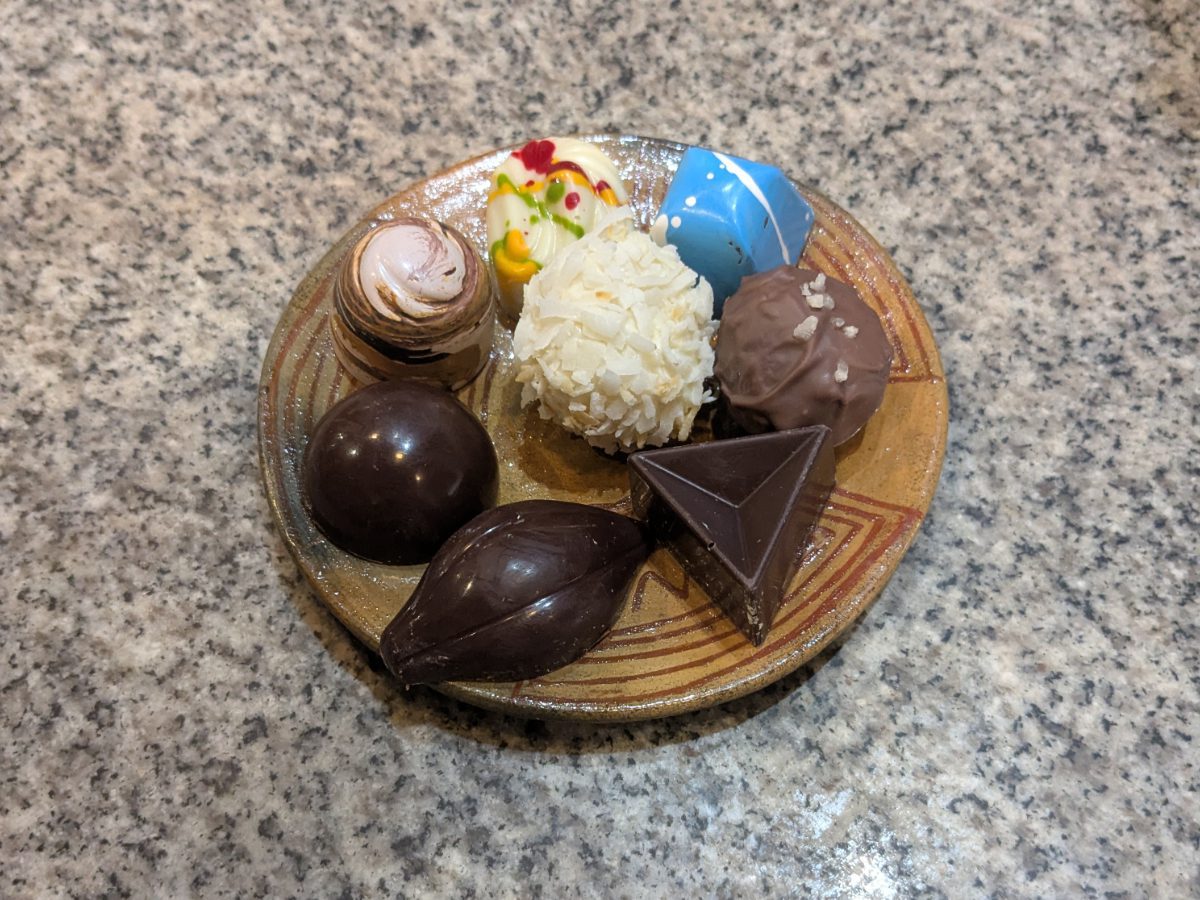
I gravitated toward the more traditional offerings: rich dark chocolate filled with creamy centers like vanilla or orange. But it was the creamy white chocolate truffle, studded with coconut, that truly transported me. It took me straight back to my Nana’s kitchen, where she kept a secret stash of what we called “cowboy chocolate” because of the Milky Bar Kid on the label. These milky-white Cadbury bars were considered a healthy treat for children back in the day, and we savored them like treat they really were. The white chocolate in that truffle had the same velvety texture and slightly caramelized flavor, a rare echo of something both familiar and far away.
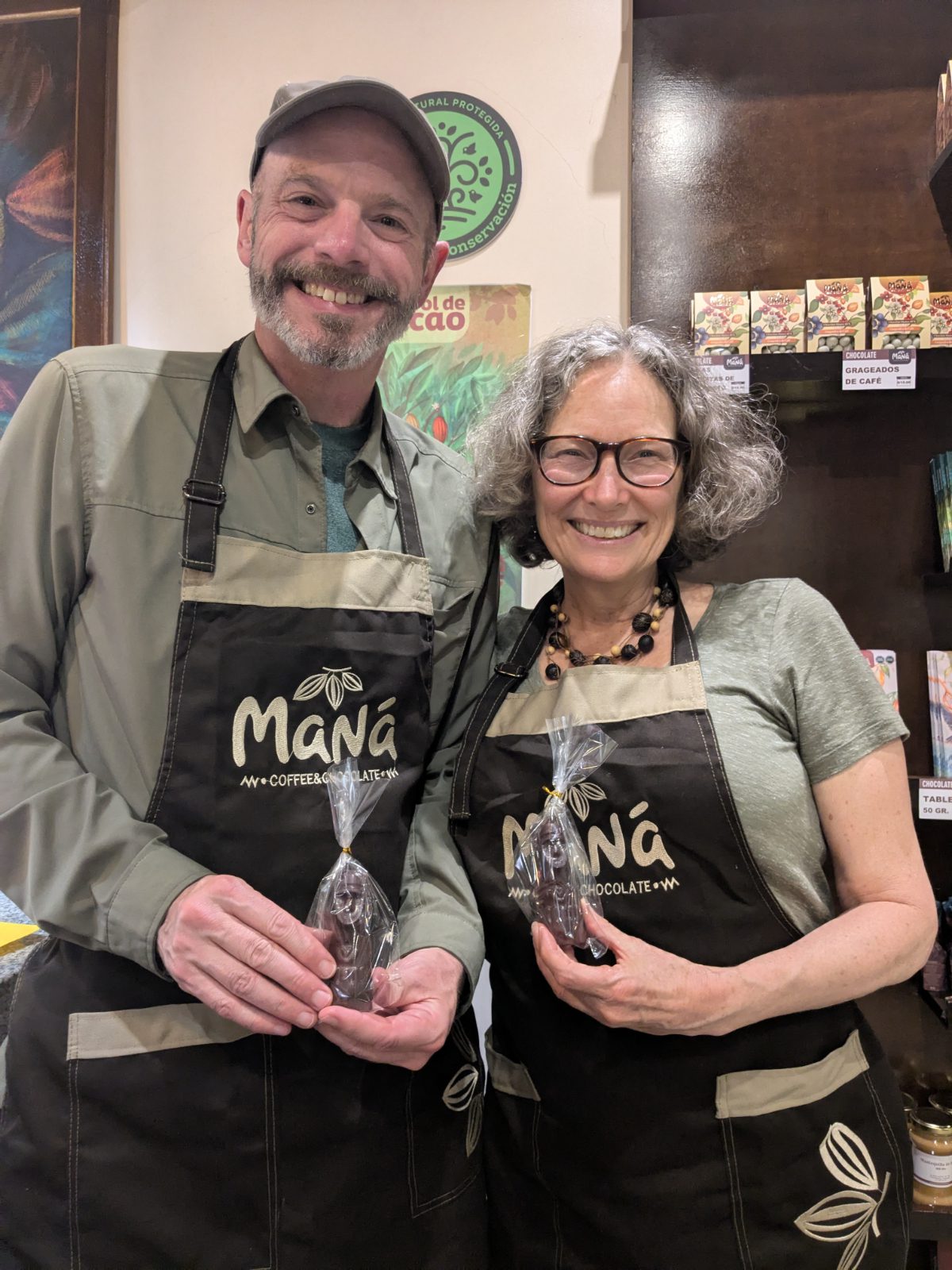
As we wrapped our finished chocolate bars, we also soaked in the ambiance of Maná Coffee and Chocolate. While we were enjoying our tasting, we watched people come and go through the café—families, couples, and friends gathering for an early evening meal. Traditional Peruvian dishes filled the tables, and more than one plate was paired with a steaming cup of hot chocolate. The space felt alive, warm, and full of everyday joy.
We came for the chocolate, but left with something richer: a deeper appreciation for how food can tell stories, build community, and bring people together. If you find yourself in Chachapoyas, Peru, book a chocolate tasting with Giannini. You won’t be disappointed!

